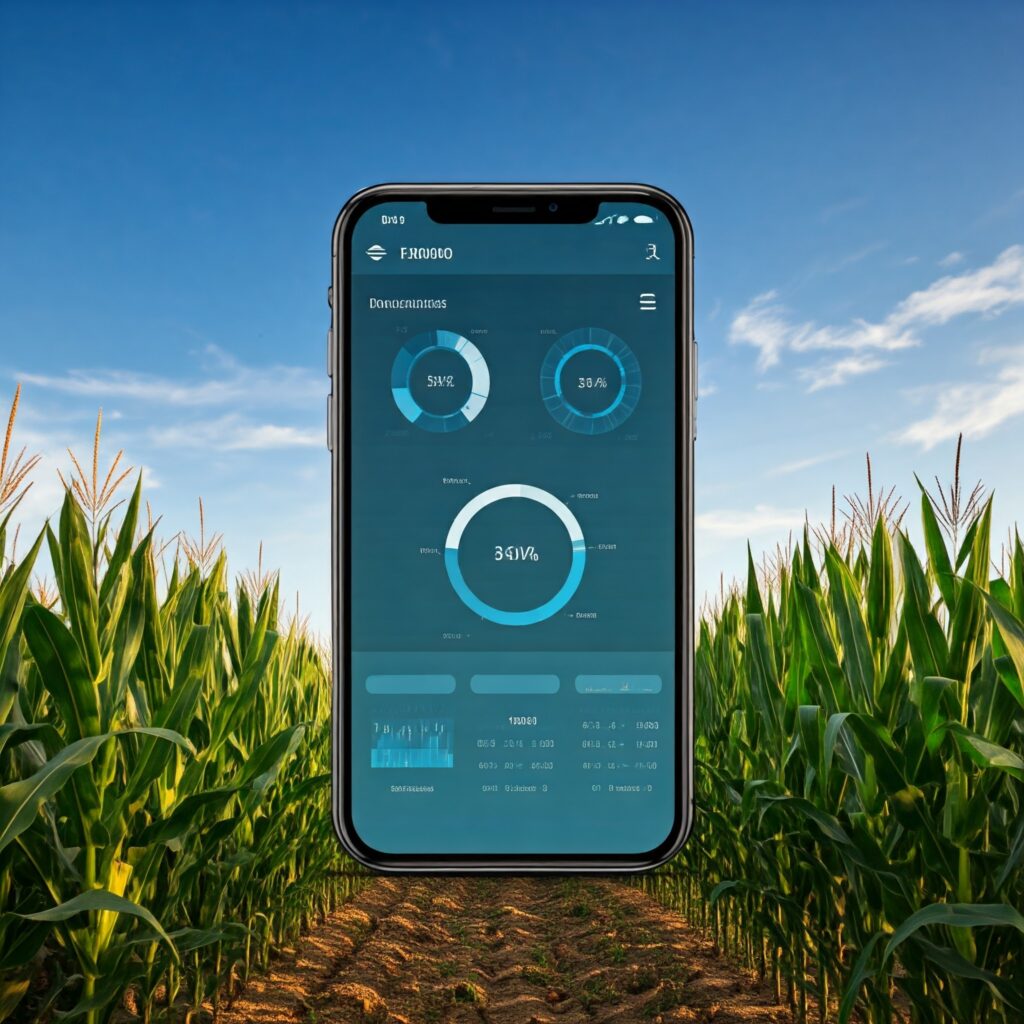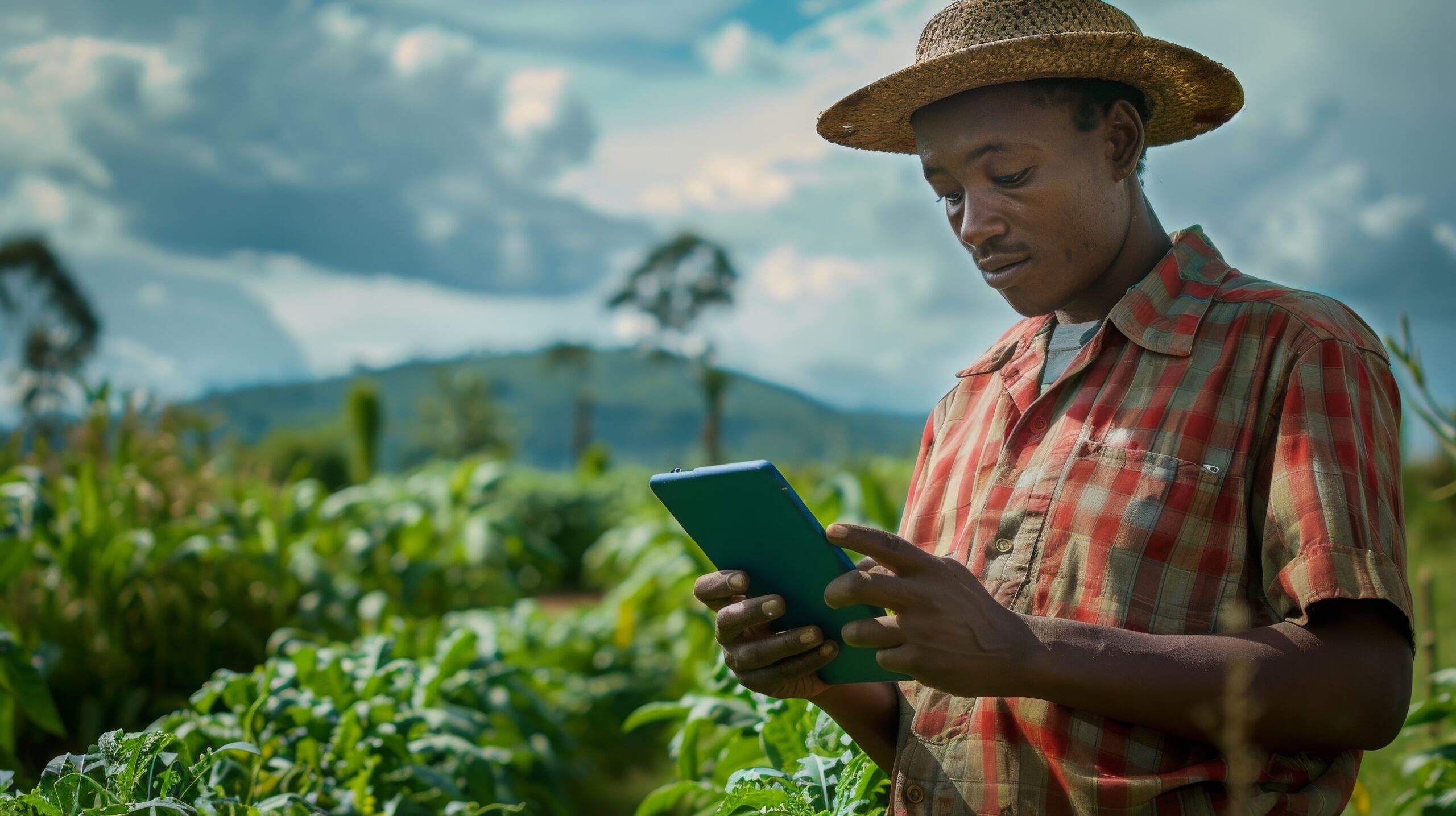In today’s rapidly evolving world, technology is transforming every industry, including agriculture. One of the most significant advancements in recent years is the emergence of data-driven farming, also known as precision agriculture. This approach involves collecting and analyzing large amounts of data to optimize agricultural practices and improve outcomes. While data-driven farming has been widely adopted by large-scale commercial farms, its potential benefits for smallholder farmers, who form the backbone of agriculture in many developing countries, have only recently begun to be explored.
Smallholder farmers face numerous challenges, including limited access to resources, vulnerability to climate change, and difficulty in accessing markets. Farmers can overcome these obstacles and improve their livelihoods. However, the advent of data-driven farming offers a promising solution to these challenges.
Data-driven farming can provide valuable insights into crop health, soil conditions, weather patterns, and market trends. By harnessing the power of data, smallholder farmers can make more informed decisions, improve efficiency, and increase their yields. Through the use of various technologies, such as sensors, satellites, and mobile applications, farmers can collect and analyze vast amounts of data to optimize their agricultural practices.
This blog post will explore how data-driven farming can empower smallholder farmers to overcome their challenges and achieve greater success. We will discuss the challenges they face, the tools and technologies available to them. By understanding the potential of data-driven farming, smallholders can unlock new opportunities and build more resilient and sustainable agricultural businesses.
Challenges Faced by Smallholder Farmers, Data-Driven Farming: A Solution for Smallholder Farmers
Smallholder farmers, who cultivate small-scale farms, play a crucial role in food security and rural livelihoods, especially in developing countries. However, they often face numerous challenges that can hinder their productivity and well-being. These challenges include limited access to resources, vulnerability to climate change, lack of market information, and reliance on traditional farming practices.
One promising solution to address these challenges is data-driven farming. By harnessing the power of data, smallholder farmers can make more informed decisions, improve their efficiency, and enhance their resilience to climate change.
Smallholder farmers often have limited access to land, water, fertilizers, and other essential inputs. This can restrict their ability to produce sufficient crops. Data-driven farming can help address this challenge by providing insights into optimal resource allocation. For example, sensors can monitor soil moisture levels, allowing farmers to irrigate only when necessary, conserving water and reducing costs.
Climate change is increasingly impacting agricultural production, leading to droughts, floods, and unpredictable weather patterns. Smallholder farmers are particularly vulnerable to these changes due to their reliance on rain-fed agriculture and lack of adaptation strategies. Data-driven farming can help farmers better prepare for and adapt to climate change by providing accurate weather forecasts, early warning systems for extreme events, and recommendations for climate-resilient crops.
Smallholder farmers may have limited access to information about market prices, demand, and quality standards. This can make it difficult for them to sell their produce at fair prices. Data-driven farming can provide farmers with access to market data, enabling them to make informed decisions about when and where to sell their products.
Many smallholder farmers continue to rely on traditional farming methods that may be inefficient and unsustainable. Data-driven farming can help farmers improve their productivity and sustainability by providing insights into optimal planting dates, fertilization rates, and pest control strategies.
Data-driven farming offers a promising solution to address the challenges faced by smallholder farmers. By leveraging the power of data, farmers can improve their resource management, build resilience to climate change, enhance market access, and make more informed decisions. As technology continues to advance, it is essential to ensure that smallholder farmers have access to the tools and training they need to benefit from data-driven farming.
Benefits of implementing Data-Driven Farming for Smallholder Farmers
Data-driven farming allows farmers to optimize their use of resources, such as water and fertilizers. By monitoring soil moisture levels and weather patterns, farmers can tailor their irrigation practices to minimize water waste and ensure that crops receive the nutrients they need. This can lead to significant cost savings and improved overall efficiency.
By analyzing data on crop growth, soil conditions, and weather patterns, farmers can make informed decisions about planting dates, seeding rates, and other crop management practices. This can result in higher yields and better quality produce. Additionally, data-driven techniques can help farmers optimize harvesting and post-harvest handling, reducing losses and ensuring that products reach the market in optimal condition.
Data-driven farming can help farmers adopt more sustainable practices, such as reducing their reliance on pesticides and fertilizers. By using data to identify and address pest and disease outbreaks early, farmers can minimize the use of chemical inputs, protecting the environment and improving soil health. Additionally, data-driven farming can help farmers implement sustainable practices like crop rotation and cover cropping, which can enhance biodiversity and improve ecosystem resilience.
By improving yields, reducing costs, and enhancing product quality, data-driven farming can help farmers increase their income. This can lead to improved livelihoods for farmers and their families. Additionally, by ensuring a reliable food supply, data-driven farming can contribute to food security for both farmers and their communities. Furthermore, access to data-driven technologies can empower smallholder farmers, giving them greater control over their agricultural operations and improving their overall well-being.
Key tools and Technologies for Data-Driven Farming
Data-driven farming relies on a variety of tools and technologies to collect, analyze, and utilize data. Sensors, satellites, drones, IoT devices, data analytics software, and mobile applications are among the most important tools in this field.
Sensors play a crucial role in data-driven farming by collecting data on various environmental factors. Soil moisture sensors can be used to determine when to irrigate crops, preventing overwatering and conserving water. Temperature sensors can be used to monitor crop growth and identify potential frost damage.
Satellite imagery provides high-resolution images of crops and fields, allowing farmers to monitor crop health, detect pests and diseases, and assess the impact of weather events. For example, satellite imagery can be used to identify areas of crop stress, such as nutrient deficiencies or water shortages. Additionally, satellite data can be used to monitor soil conditions, such as erosion and nutrient depletion.
Drones are another valuable tool for data-driven farming. Equipped with cameras and sensors, drones can capture detailed images of crops and fields. This data can be used to identify problem areas, assess crop growth, and monitor soil conditions. Drones can also be used to apply pesticides and fertilizers more precisely, reducing waste and environmental impact.
The Internet of Things (IoT) is also playing an increasingly important role in data-driven farming. IoT devices can be used to collect data on various aspects of agricultural operations, such as soil moisture, temperature, and livestock health. For example, IoT sensors can be used to monitor the temperature and humidity in storage facilities, ensuring that crops are stored under optimal conditions. IoT devices can also be used to track the location and health of livestock, preventing losses and improving efficiency.
Data analytics software is used to process and analyze the data collected from sensors, satellites, drones, and IoT devices. This software can identify trends, patterns, and correlations in the data, providing valuable insights for decision-making. For example, data analytics software can be used to predict crop yields, optimize fertilizer applications, and identify the best time to harvest crops.

Mobile applications are also essential tools for data-driven farming. Farmers can use mobile applications to access and analyze data, as well as to communicate with other farmers and experts. These applications can also provide farmers with real-time information on weather conditions, market prices, and crop recommendations. For example, farmers can use mobile applications to monitor weather forecasts and adjust their planting and harvesting schedules accordingly.
But that’s not all! Discover even more about smartphone is an essential tool for your farm in this related article here.
The Decision-Making Process for Smallholder Farmers
Smallholder farmers face numerous decisions on a daily basis that can significantly impact their productivity and livelihoods. These decisions range from choosing the right crops to plant and managing their resources to navigating market fluctuations. Data-driven farming can provide valuable insights to inform these decisions and help smallholder farmers make more informed choices.
Data-driven farming can provide smallholder farmers with a wealth of information that can be used to make informed decisions. By analyzing data on crop performance, soil health, weather patterns, and market trends, farmers can identify areas for improvement and optimize their agricultural practices. For example, data on soil nutrient levels can help farmers determine the appropriate amount and type of fertilizer to apply, while data on weather forecasts can help farmers plan their planting and harvesting schedules.
Key decision areas for smallholder farmers include crop selection, resource management, pest and disease control, and market access. Data can help farmers choose the most suitable crops for their specific conditions, taking into account factors such as soil type, climate, and market demand. Additionally, data can be used to optimize the use of resources, such as water, fertilizers, and labor. By monitoring soil moisture levels and crop water requirements, farmers can adjust their irrigation schedules to minimize water waste.

Data can also be used to identify and address pest and disease outbreaks early, preventing significant crop losses. By monitoring crop health and identifying signs of pests or diseases, farmers can take targeted action to control infestations and protect their crops. Furthermore, data can provide smallholder farmers with valuable information about market trends, prices, and quality standards. This can help farmers identify profitable markets, negotiate better prices, and improve the quality of their products.
Challenges and Opportunities for a data-driven farming
While data-driven farming offers significant benefits, there are also challenges that smallholder farmers may face. These challenges can include limited access to data, lack of technical skills, and high costs associated with data collection and analysis. However, with the right support and training, smallholder farmers can overcome these challenges and fully benefit from the power of data-driven decision-making.
By leveraging data, smallholder farmers can make more informed decisions and improve their productivity, resilience, and livelihoods. As technology continues to advance, it is essential for smallholder farmers to have access to the tools and training they need to fully benefit from data-driven farming.
conclusion
In conclusion, data-driven farming offers a promising solution to the challenges faced by smallholder farmers. By harnessing the power of data, farmers can improve their resource management, build resilience to climate change, enhance market access, and make more informed decisions. The tools and technologies available for data-driven farming, such as sensors, satellites, drones, and mobile applications, provide farmers with valuable insights to optimize their agricultural practices.
However, it is essential to address the challenges associated with adopting data-driven farming, including limited access to data, lack of technical skills, and high costs. Governments, NGOs, and private sector organizations can play a crucial role in supporting smallholder farmers by providing training, education, and affordable access to data-driven technologies.
By embracing data-driven farming, smallholder farmers can unlock new opportunities, improve their livelihoods, and contribute to a more sustainable and resilient agricultural sector. As technology continues to advance, the potential for data-driven farming to transform the lives of smallholder farmers is immense.


